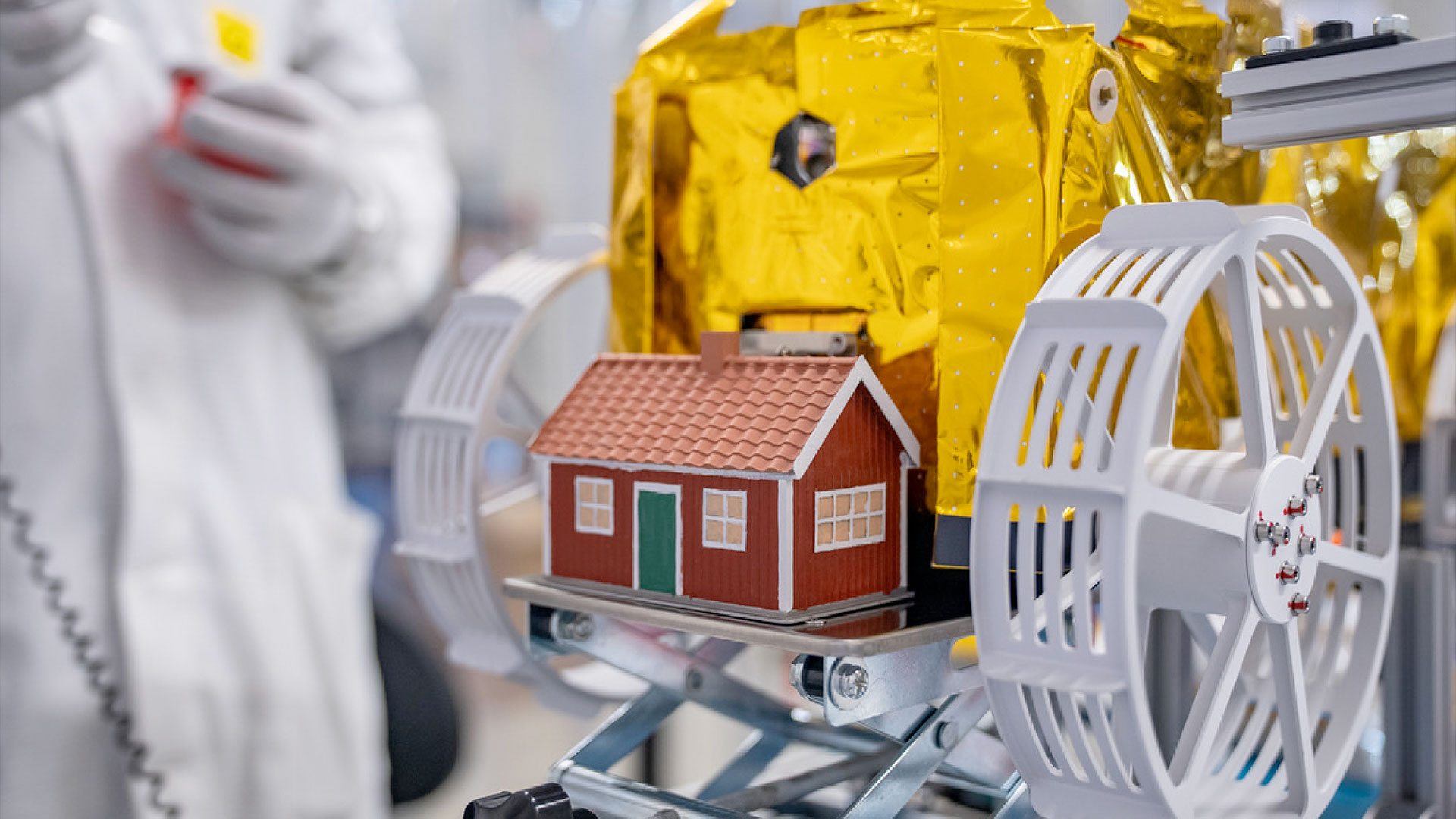US Postal Service drops new OSIRIS-REx stamp ahead of asteroid sample return
Signed, sealed and sampled...
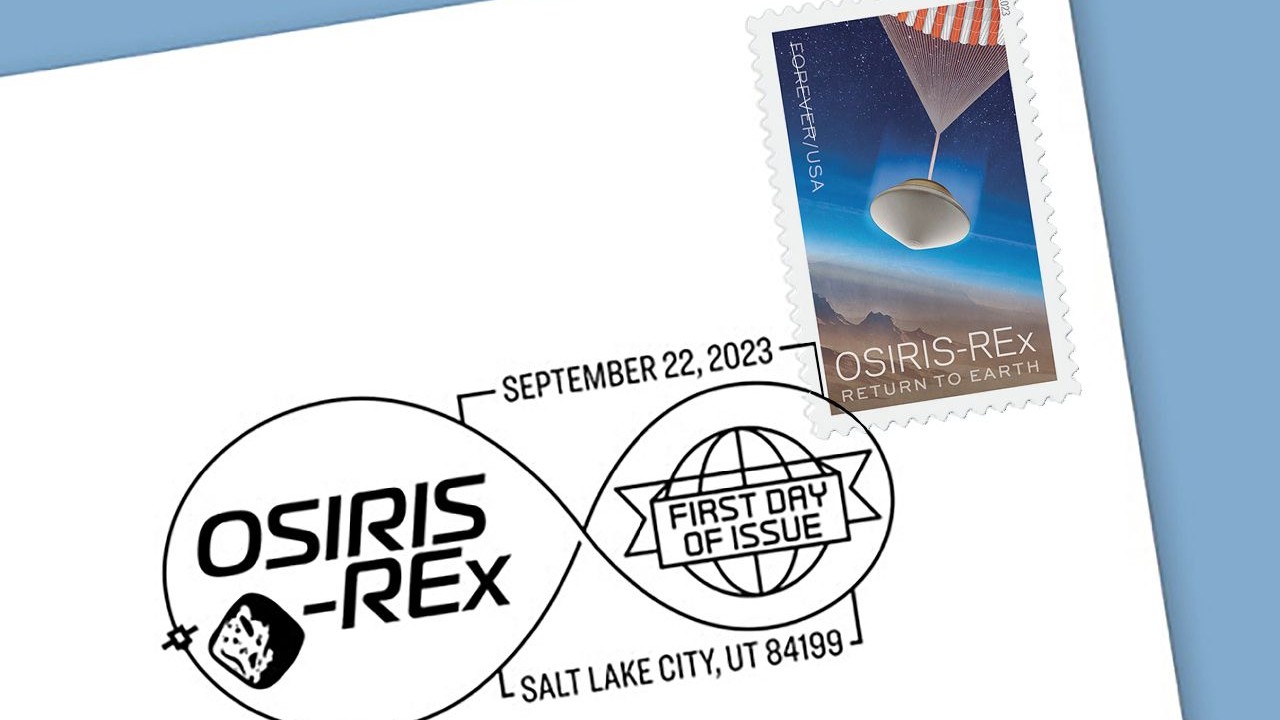
NASA's first asteroid sample mission has landed at post offices across the United States two days before the spacecraft's return capsule is set to land back on Earth.
The U.S. Postal Service on Friday (Sept. 22) released a new stamp celebrating NASA's OSIRIS-REx spacecraft and the samples of the asteroid Bennu that it is set to deliver to the Utah desert on Sunday. The Clark Planetarium in Salt Lake City is set to host a first-day-of-issue ceremony for the Forever stamp on Friday. "With this stamp, you can be part of this exciting moment in science!" the USPS described on its website.
The stamp's artwork shows the OSIRIS-REx capsule, which contains the asteroid samples, descending under a parachute to the Utah Test and Training Range, a U.S. Department of Defense facility. The same scene should play out in real life on Sunday, should everything go to plan.
The stamp comes in sheets of 20 with a depiction of the surface of Bennu at the bottom of the pane and an outer space scene of deep blue dappled with celestial bodies above. A view of the asteroid as imaged by the OSIRIS-REx spacecraft is in the upper right corner.
Related: Telescope spots NASA's OSIRIS-REx probe as it brings asteroid samples to Earth (photo)
On the left side of the pane, four images illustrate key milestones in the OSIRIS-REx (or Origins-Spectral Interpretation-Resource Identification-Security-Regolith Explorer) mission. On the reverse side of the sheet is text describing each image.
USPS art director Antonio Alcalá designed the stamp and pane, which features illustrations by Alan Dingman based on imagery supplied by NASA.
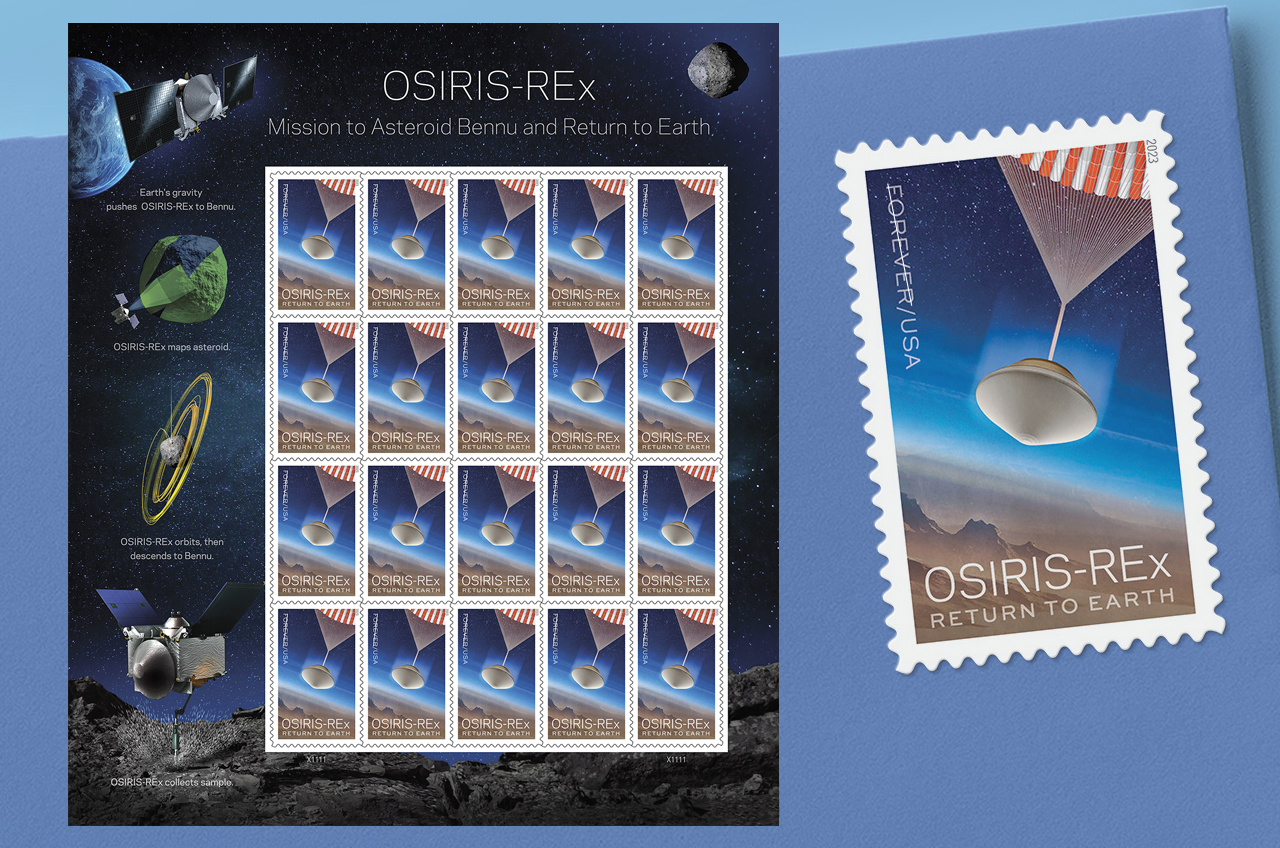
Launched on Sept. 8, 2016, the OSIRIS-REx robotic probe arrived at Bennu in December 2018, and, after mapping the asteroid for almost two years, collected a sample from the surface on Oct. 20, 2020. The mission's team estimates that up to 250 grams (9 ounces) of rocks and dust were collected. The spacecraft left Bennu's vicinity to return to Earth on May 10, 2021.
Early Sunday morning, the OSIRIS-REx spacecraft will jettison its sample return capsule, which will then touch down in Utah. The main spacecraft, meanwhile, will put itself on the trajectory to encounter the asteroid Apophis under its extended mission, OSIRIS-APEX.
OSIRIS-REx is set to deliver the largest-ever sample of a celestial body located beyond the moon. It is the United States first asteroid sample mission and the third worldwide (Japan was the first to collect asteroid samples and return them to Earth with its Hayabusa 1 and Hayabusa 2 missions).
USPS business solutions vice president Robert Raines and Lori Glaze, NASA's director for planetary science, are scheduled to speak at the first-day-of-issue ceremony, as is Michael Puzio, who named asteroid Bennu in 2013 when he was eight years old.
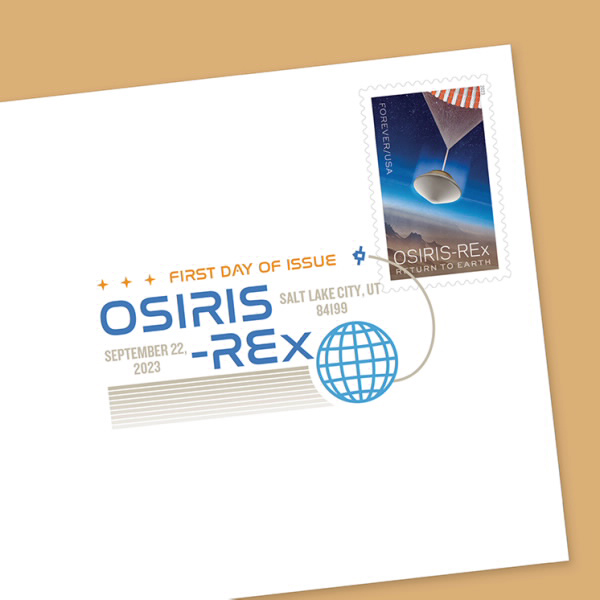
Those who could not attend the Salt Lake City ceremony can mail in requests for first-day-of-issue postmarks. Collectors and the public have the next 120 days to buy and affix the OSIRIS-REx stamp to an envelope of their desire, self-address or address it to others and then mail it inside a larger envelope to:
After applying the first-day-of-issue postmark, the USPS will return the envelope through the mail. There is no charge for the postmark up to a quantity of 50, after which it is 5 cents per additional postmark. All requests must be postmarked by Jan. 22, 2024.
A digital color postmark is also available by following similar instructions as above, but limited to the choice of #6 or #10 size envelopes constructed of paper rated as "laser safe" (the USPS recommends envelopes of 80-pound Accent Opaque, acid-free, 9/16-inch side seams with no glue on the flap).
Sufficient space must be left on the envelope to accommodate the digital color postmark. Do not use self-adhesive labels. Two test envelopes must be included. There is a minimum of 10 envelopes at 50 cents per digital color postmark required at the time of servicing with payment in the form of check, money order or credit card.
Collectors and the public can also send stamped envelopes and postcards without addresses for postmark, so long as they supply a larger self-addressed envelope with adequate postage. After applying the postmark, the post office will return the covers (with or without addresses) in the addressed larger envelope.
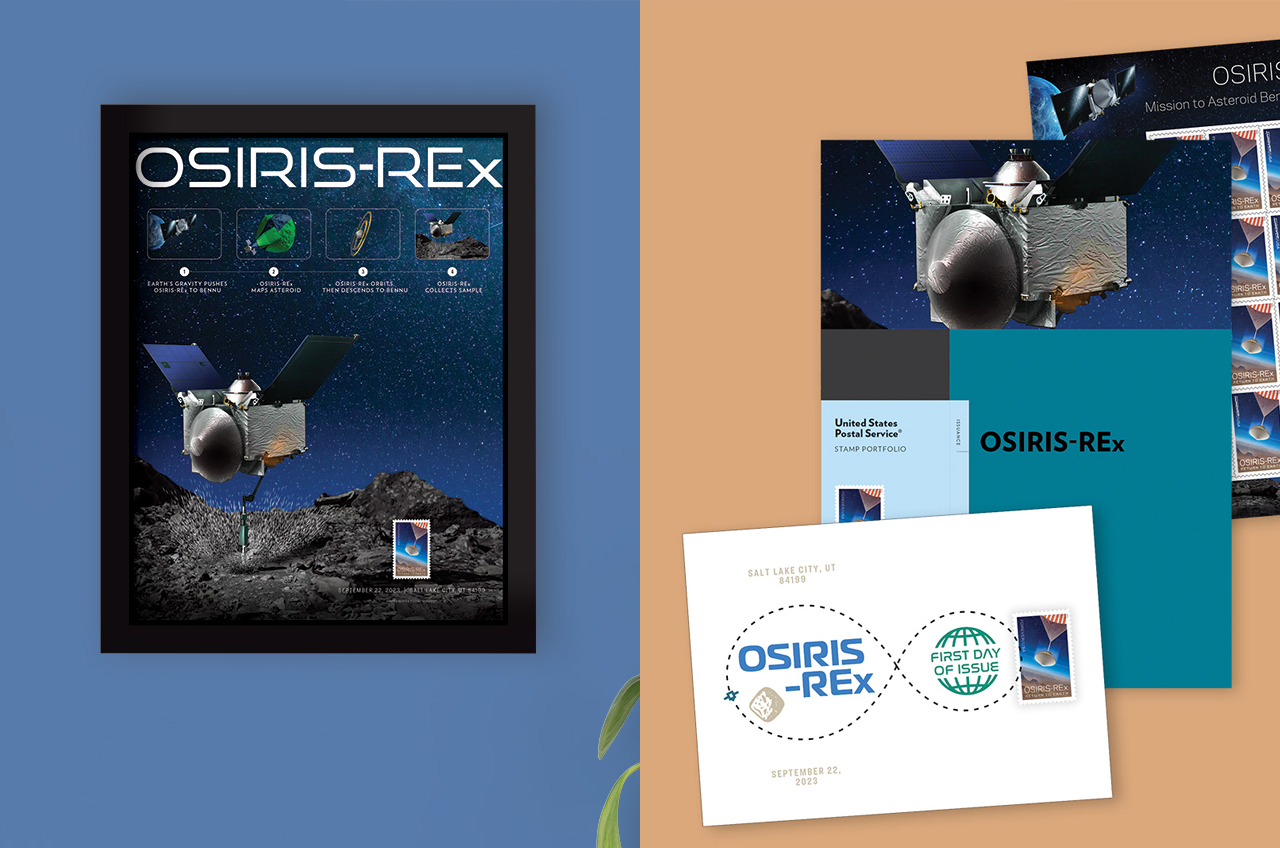
Alternatively, postmarked "covers" and other related collectibles can be purchased through the USPS website.
In addition to 20-stamp sheets for $13.20 each, the USPS has first-day-of-issue covers featuring either ink or digital color postmarks for $1.21 or $2.06 each, respectively. A commemorative panel is available for $11.95 and a portfolio with more information about the OSIRIS-REx mission is $23.95.
A framed set of the stamps is available for $39.95. Press sheets with or without die cuts are for sale for $118.80. A memento from Friday's first-day-of-issue ceremony lists for $30.95.
Get the Space.com Newsletter
Breaking space news, the latest updates on rocket launches, skywatching events and more!
Follow collectSPACE.com on Facebook and on Twitter at @collectSPACE. Copyright 2023 collectSPACE.com. All rights reserved.
Join our Space Forums to keep talking space on the latest missions, night sky and more! And if you have a news tip, correction or comment, let us know at: community@space.com.

Robert Pearlman is a space historian, journalist and the founder and editor of collectSPACE.com, a daily news publication and community devoted to space history with a particular focus on how and where space exploration intersects with pop culture. Pearlman is also a contributing writer for Space.com and co-author of "Space Stations: The Art, Science, and Reality of Working in Space” published by Smithsonian Books in 2018.In 2009, he was inducted into the U.S. Space Camp Hall of Fame in Huntsville, Alabama. In 2021, he was honored by the American Astronautical Society with the Ordway Award for Sustained Excellence in Spaceflight History. In 2023, the National Space Club Florida Committee recognized Pearlman with the Kolcum News and Communications Award for excellence in telling the space story along the Space Coast and throughout the world.

